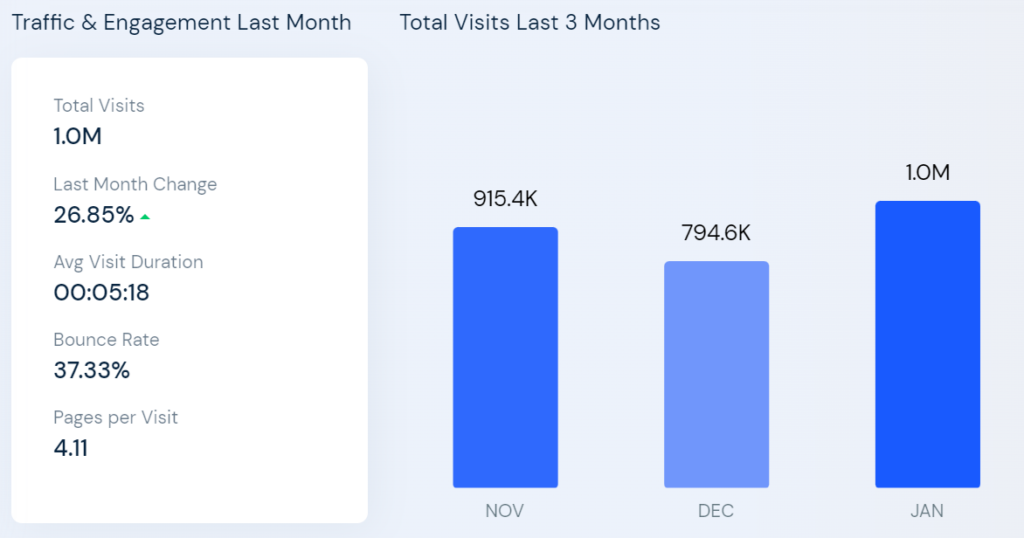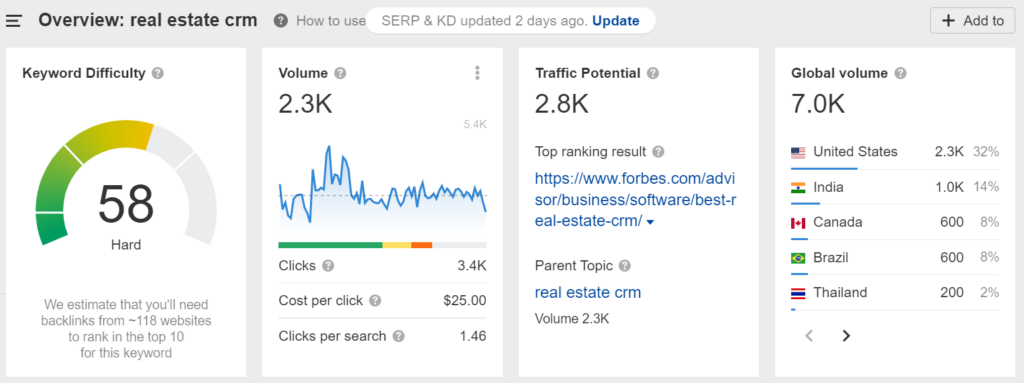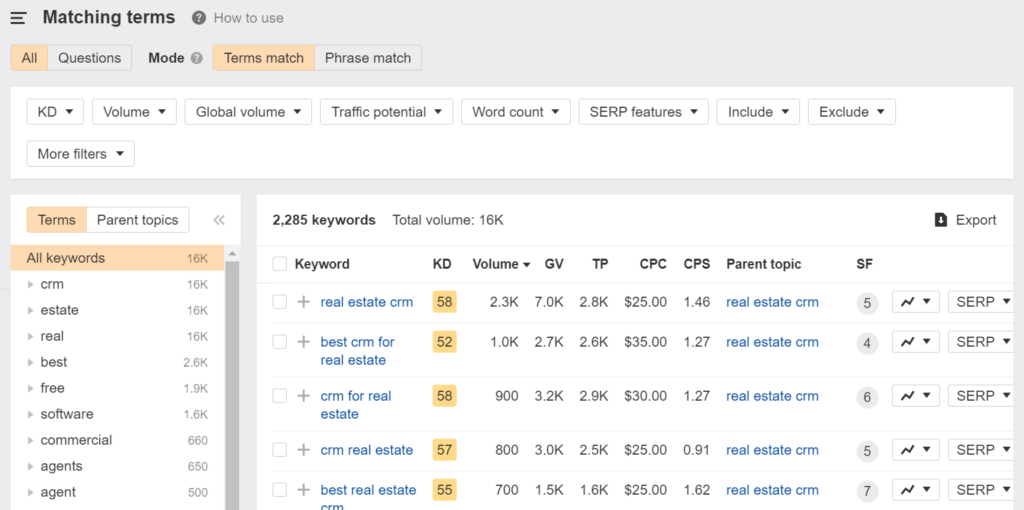Last updated on October 26th, 2022
Most B2B companies start with writing a blog, creating a few eBooks, and optimizing their service pages, but never scale up from there.
That’s mostly because they lack a clear B2B content marketing strategy that guides them to move forward and iterate their way towards consistent growth.
This blog will help you set a clear pathway to building a content engine that keeps compounding. We’ll talk about the importance of strategy, how you can build one, and share which key growth metrics you need to measure.
But Why Content Marketing?
Content marketing helps you reach your target customers when they are at the top of the funnel and shows them that your company can help solve their problems.
When used correctly, content marketing will not only strengthen your brand but also drive more high-quality traffic to your website and convert leads into customers.
Importance of B2B Content Marketing Strategy
Content marketing is a vital part of your company’s growth and having a solid strategy in place will help you scale it faster.
Here are some of the key benefits:
- It helps you understand what your target customers care about and how they consume content. This way, you’ll be able to create topics that drive you the most amount of search traffic.
- It helps you find the right keywords to target so that your content can rank higher in search results. A good strategy will make sure you don’t miss out on any high-converting keywords.
- A strong strategy will help you create a calendar that shows what types of content needs to be created and when it should go live. It’ll also include all the channels where you should distribute the content.
- You’ll be able to track the success of each piece of content and see how it impacts your overall business goals. This will help you iterate and improve your strategy over time.
Now that we know why having a strategy is important, let’s look at how you can build one for your company.
Building a B2B Content Marketing Strategy
Most people think that content marketing is easy. They believe they can start writing a few blog posts and convert more visitors into customers.
Unfortunately, this isn’t true. Creating content at scale is one of the most challenging things to do in any B2B company. And we’ll help you show a clear path that makes this entire process simpler.
Here’s a step-by-step process to build your b2b content marketing strategy:
Step 1: Know Who is Your Audience
Ask your sales team.
This is one of the most basic things that most marketers miss. Your sales team is the one who speaks with the customers consistently and they can share:
- Which customers are easiest to convert
- Which industries have the most frequent use case for product or service
- The demographic details about your audience, location, company size, revenue, etc.
- Understand who is the decision maker
- What are the key KPIs for the decision maker
You can have multiple buyer personas depending on the customers you are going after. Let’s look at Gong, a revenue intelligence tool. What’s interesting is how they have clearly defined their target audience:
- CROs & Sales Leaders – To educate about Revenue Intelligence
- Sales Managers – To understand how they can get visibility into their team’s performance
Gong receives more than 1M visits every month, while 95.18% of its traffic is organic, and more than 22% of its traffic comes from search and social media channels. (Source: Similarweb)

Step 2: Finalize the content types you will create
The next step is to figure out what content you want to create for each audience persona.
Let’s go back to the Gong example, here are some of their popular content pieces:
- THE SALES FORECAST TEMPLATE FOR SALES MANAGERS: Sales forecasting is one of the basic KPIs for sales managers. A quick google search for a template will help sales managers by saving time, and Gong grabbed this opportunity.
- Landing Pages: Gong creates multiple landing pages around Sales enablement, Conversation Intelligence, Revenue Intelligence, and more which becomes a high-value BOFU(Bottom of the funnel) content.
These are all high-quality resources that educate their target customers about revenue intelligence and how they can their sales team’s efficiency.
Step 3: Pick Your Distribution Channels
Now it’s time to figure out where you’ll publish your content. The channel you choose will depend on the type of content, your audience, and how easily searchable that channel is.
For example:
- If you want people to read your blog post or article then a distribution platform like Medium can be a good choice as it has high visibility and allows people to share your content easily.
- If you want to target CXOs and professionals, you might want to pick LinkedIn as the most preferred social media channel for distribution.
Step 4: Define Key Content Buckets
Now that you know your audience and the type of content you want to create, let’s understand how to define content buckets.
In case of Gong, the key buckets would include
- Revenue Intelligence
- Sales Management
- Selling Skills
- Customer Stories
For Intercom, the key buckets are:
- Customer support
- Growth & Marketing
- Sales
- Product
Step 5: Build a Keyword Universe
Once you have your content buckets ready, you should build a list of keywords that can drive the most amount of organic traffic.
Tools like Ahrefs & Ubersuggest can help you find SEO keywords related to your business.
Let’s say you are building a CRM for Real Estate, here’s how you can use Ahrefs to build your Keyword Universe.
- Start with searching the main keyword “real estate crm”

In US alone, 2800 people search for Real Estate CRM every month and that’s a good step to start.
2. Look for the matching and related terms and start building your keyword lists.

You can filter these keywords as per the intent and relevance to your target audience. Once you are done, export the list of all keywords that you wish to target.
Step 6: Create a Content Calendar
You need to have a plan for your content. You should know when each piece of content will be published, on what channels will it be distributed, and how would it be repurposed.
Tools like CoSchedule or Trello can help you in building your content calendar.
Let’s define it in a few simple steps:
– Set up a Google Sheet where you list down all the topics that are going to be published in a given month.
– Create different tabs for each month and add the topics under them. You can also include columns like title, publish date, social media channels, and repurpose type.
– Once you have all the topics in place, start filling in the publish date and other relevant information.
– As you are publishing content, make sure to update the Google Sheet with the live link, social media posts, and any other required information
Let’s try doing this from Gong’s perspective:
– Topic: 10 Coaching Tips To Guide Your Sales Team For Success
– Format: Blog post or article
– Target persona: Sales Managers
– Distribution Channel: LinkedIn
This is a very simple way to define your content calendar and helps you stay focused on what’s important.
Step 7: Define Roles in Your Team
So far, we have defined all the information you need to build a b2b content marketing strategy. But before you go ahead and start executing it, there’s one more thing that needs your attention – defining roles in your team.
Usually, different members of the marketing team are involved in creating content for the company blog or social media channels. However, you need to know who is going to do what in the team so that you can ensure proper coordination and alignment of efforts.
Here are some of the roles that you might have in your team:
- Content Writer
- Content manager
- Graphic Designer
- Video Producer
Each of these roles will have different responsibilities, and it’s important that you know who is doing what. You might want to also consider outsourcing content creation to continue to focus more on strategy and distribution.
Step 8: Define key metrics to track
Now that you have all the basics in place, it’s time to start tracking your content marketing efforts.
There are a number of different metrics that you can track – depending on what’s important to your business. However, some of the most common ones include:
– Website Traffic: This will help you understand how much traffic is being driven to your website from content marketing efforts.
– Email List Growth: If you are using email marketing as a distribution channel, this metric will help you understand the growth of your email list.
– Search Engine Traffic: This metric shows how much organic traffic is coming to your site through search engines.
– Social Media Traffic: This metric shows the number of clicks that you are getting to your website from social media platforms.
– Time Spent on Website: This is a great way to measure whether people are actually engaging with your content or not. If they spend more time, it means that they are consuming your content.
– Conversion Rate: If you are using content to drive leads, then this metric is important for you because it will show how many people actually converted and became customers.
Wrapping Up
Think of content marketing as a marathon and having a clear guide will help you cherish the results towards the end. A content marketing strategy is an essential part of any company’s marketing plan and should be well-defined with roles, responsibilities, and key metrics to track. By following these simple steps, you can create a b2b content marketing strategy for your business that will help you achieve your desired results.








